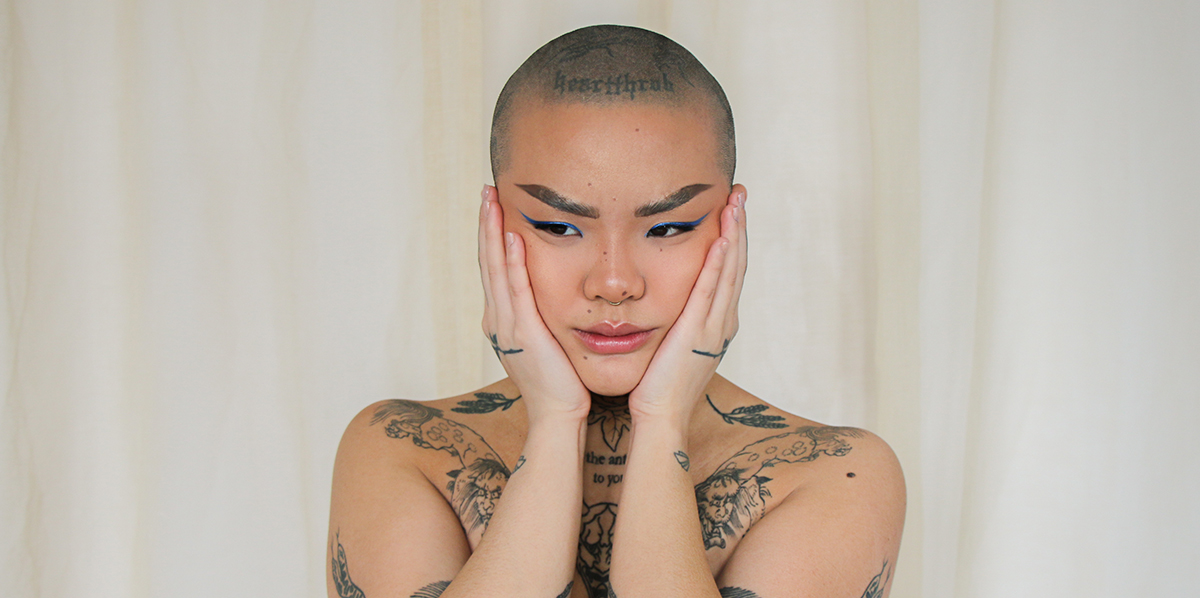If in the lead up to a tattoo appointment you find yourself worried that your artist might make a mistake while inking your design, know that this fear is normal and, to some degree, even warranted. Getting tattooed is like having a picture drawn on your body where the image is permanent from the moment the artist’s needle punctures your skin. It’s a process prone to error and artists do sometimes make mistakes when tattooing their clients. Although this sounds scary, it’s important to understand that these mistakes are rarely critical, unfixable errors—most blunders can be corrected easily and will ultimately go unnoticed.
“Mistakes are made all the time. No artist on earth is perfectly flawless,” says Seven McDougall,
That said, small mistakes happen often and are usually easy to hide
Brittany Randell, the Toronto-based illustrator and tattooer known online as ‘humblebee,’ is very careful with her linework—a staple of her style—but says, “even with practice, mistakes happen. I probably slightly mess up a line on one out of every few dozen tattoos, but it’s typically an easy fix; I just make the line a little thicker.” McDougall agrees, adding, “blending in mistakes is like an algebra equation; what you do to one side, you have to do to the other.”
Regardless, it’s unlikely that clients will ever notice these smaller mistakes, according to Curt Montgomery, the tattoo artist whose signature minimal style has led to quite the social media following (he has around half a million Instagram followers). “As an artist, and as a perfectionist, there will always been something in the tattoo that you know you could have done better, and you’re always more concerned about your fuck-ups than the client is because usually you’re making mistakes no one will see unless they’re staring at the tattoo all day, religiously.”
Even the worst mistakes can be fixed or covered up in some way
Montgomery is nonchalant about mistakes, but in late 2016, he made the greatest slip-up of his tattooing career. He was inking the Kanye West lyric, “hurry up with my damn croissants” on a client and misspelled “croissants“. When he was done the tattoo, his client was happy and the design looked good so Montgomery snapped a picture and posted it to Instagram. Within minutes the photo had nearly 100 comments, and he said he “immediately knew something was wrong. I looked down at my phone, read some of the comments, and finally realized how I’d messed up.” He quickly reached out to his client (who also learned about the mistake via Instagram) to tell him about the error and outline his plan to fix it. “I was lucky because the guy was a comedian and was really nice about it. He came in the next week and I added in the missing letter.”
Some mistakes won’t be as noticeable to onlookers as Montgomery’s but can be meaningful to a client who has come in with a very clear vision—issues with coloring or spacing, for example. McDougall recalls once when she was tattooing a Russian nesting doll on one of her regular clients, “the doll has patterned colors in its sweater,” she said, “and I accidentally put green in a spot that was supposed to be orange.” Her client was also very understanding when she immediately stopped, pointed out the mistake, and proposed a plan of action: apply green to the other side of the pattern to balance it out.
Although both of these larger mistakes changed the client’s vision of their design in some way, they were nonetheless fixable, as most mistakes are with a bit of flexibility from both the tattooer and the tattooee.
There are a number of precautions clients can take to help their artists better avoid error
Randell, Montgomery and McDougall concur that mistakes are frequently the result of a client’s flinching (which is a normal reaction to the pain of getting inked) or moving without warning. There are a few ways you can help avoid this in the lead up to a tattoo appointment and during the appointment itself, though, including:
- “If you feel twitchy or jumpy, try to push your limb down into the armrest or table instead of jumping up,” suggests McDougall. By doing this, your limb drops away from the artist’s machine, she explains, rather than up and directly into the needle which can “cause a mistake or too deep of a mark.”
- During the appointment, don’t be afraid to take breaks. “People need breaks for a number of reasons and it’s important to make sure they know they can take them,” notes Randell, who asks clients throughout their tattoo appointments if they’re comfortable and if they need time to recuperate. “It’s important to be understanding and to make sure your client’s comfort is a top priority.”
- Take care of your body—provide it with rest and proper nourishment. Randell also recommends that clients take care of their bodies in the lead-up to every tattoo appointment. “Getting tattooed is hard on your body—it’s a process that kicks your immune system and endorphins into high gear—but eating a good meal, getting a solid rest, and being well hydrated can help ease any discomfort and make it easier to sit still throughout your appointment.”
- Swear. “I tell my clients to let the F-bombs fly if they want to,” says McDougall. “Cussing relieves pain! Mythbusters proved it!”


So informative! I’d honestly love to hear about the process of touch up’s and how to go about them. I’ve never regretted my tattoos, but I do wish they had that depth to them like when they were fresh. The blacks just aren’t as deep or sharp, and I’ve never been sure about the touch-up process.
Thank you for this feedback! Will definitely do a piece on this for you, karen!
Are there are any types of tattoo designs or styles I should look at for a 2.5 x 2.5 in cover up?